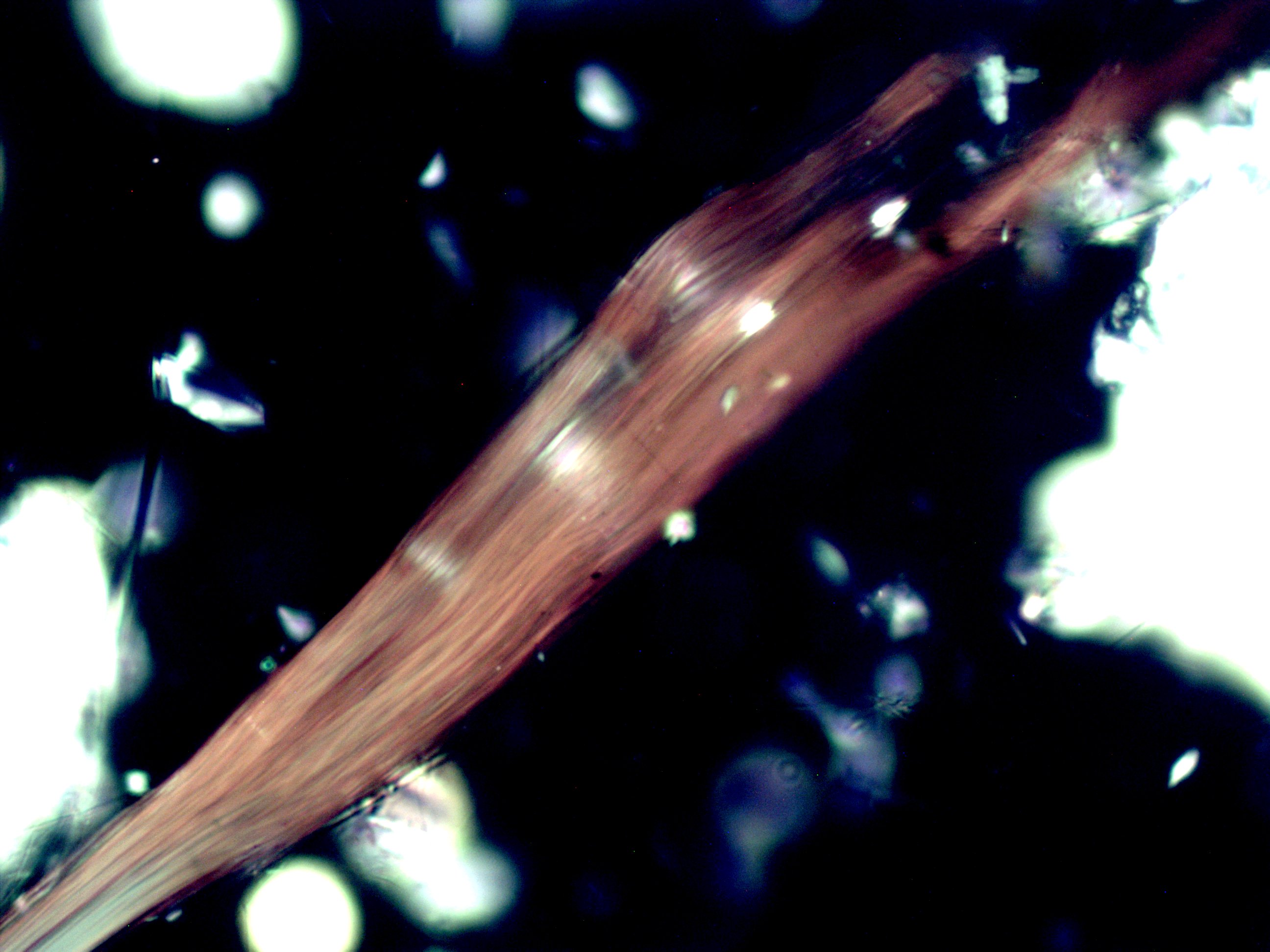Anomalous Birefringence of Crocidolite
Thin fibers of crocidolite appear pink between crossed polars because the birefringence is much higher in red than in the blue wavelengths. In thicker fibers the natural blue of the fibers dominate.
Transmitted Crossed Linear Polarized Light Illumination
2. Campbell, W.J., R.L. Blake, L.L. Brown, E.E. Cather, and J.J. Sjoberg, IC 8751; SELECTED SILICATE MINERALS AND THEIR ASBESTIFORM VARIETIES, US Dept. of the Interior, Bureau of Mines Information Circular, 1977
3. Deer, W. A., R. A. Howie, and J. Zussman, AN INTRODCUTION TO THE ROCK-FORMING MINERALS, ISBN 0-582-30094-0, pp. 261-267, 1992
4. Ledoux, R. L. (ed), SHORT COURSE IN MINERALOGICAL TECHNIQUES OF ASBESTOS DETERMINATION, Mineralogical Association of Canada, 1979.
5. Levadie, Benjamin (ed), DEFINITIONS FOR ASBESTOS AND OTHER HEALTH-RELATED SILICATES, ASTM STP 834, 1984.
6. Riordon, P. H. (ed), GEOLOGY OF ASBESTOS DEPOSITS, Society of Mining Engineers, 1981.
7. World Health Organization, ASBESTOS AND OTHER NATURAL MINERAL FIBRES, Environmental Health Criteria 53, 1986.
Definition/Function:
Crocidolite asbestos, the blue asbestos, is a fibrous amphibole with the chemical composition Na2Fe 5[Si8O22](OH) 2. It is one of the more hazardous asbestos minerals.Significance in the Environment:
Crocidolite is the third most common commercial asbestos, behind Chrysotile and Amosite. It is used in the blue ceramic water pipe that was used widely in the past. It was commonly used in high temperature environments, like boiler. It is the only asbestos other than chrysotile that can be easily woven into cloth. It is rare as a natural mineral so when it is found in an environment it is usually the result of the degradation of an asbestos containing construction material.Characteristic Features:
The blue color of Crocidolite is unique in the asbestos minerals though there are some other blue or blue-green mineral fibers. It has relatively high refractive indices, around 1.705. It has a dispersion of the birefringence that is visible in thin fibers. For these thin fibers they appear pink between crossed polarizers. For thicker fibers the blue absorbs most of the red end of the spectrum and the fibers appear blue. This is a very characteristic feature.Associated Particles:
Crocidolite is often used with Chrysotile asbestos.References:
1. Asbestos Textile Institute, HANDBOOK OF ASBESTOS TEXTILES, 3RD EDITION, 1967.2. Campbell, W.J., R.L. Blake, L.L. Brown, E.E. Cather, and J.J. Sjoberg, IC 8751; SELECTED SILICATE MINERALS AND THEIR ASBESTIFORM VARIETIES, US Dept. of the Interior, Bureau of Mines Information Circular, 1977
3. Deer, W. A., R. A. Howie, and J. Zussman, AN INTRODCUTION TO THE ROCK-FORMING MINERALS, ISBN 0-582-30094-0, pp. 261-267, 1992
4. Ledoux, R. L. (ed), SHORT COURSE IN MINERALOGICAL TECHNIQUES OF ASBESTOS DETERMINATION, Mineralogical Association of Canada, 1979.
5. Levadie, Benjamin (ed), DEFINITIONS FOR ASBESTOS AND OTHER HEALTH-RELATED SILICATES, ASTM STP 834, 1984.
6. Riordon, P. H. (ed), GEOLOGY OF ASBESTOS DEPOSITS, Society of Mining Engineers, 1981.
7. World Health Organization, ASBESTOS AND OTHER NATURAL MINERAL FIBRES, Environmental Health Criteria 53, 1986.


